Nendo adds fun to the daily commute with a new Japanese station plaza

Possibly the best place in the world to be delayed for a train, the CoFuFun station plaza at Tenri Station in Japan, designed by Nendo, is an upbeat urban intervention and a new community hub for Tenri City in Nara prefecture. Designed like an over-sized crazy golf range, CoFuFun has a great sense of humour, yet also gets the job done.
The 6000 sq m plaza features a series of white circular structures, that serve as multi-functional pavilions hosting a café, shops, information kiosk, bike rental, a play area, an outdoor stage and a meeting area.
The orbiting concrete forms are also historically informed, referencing ancient Japanese burial structures 'cofun,' common to Nara which can be found dotted around the mountainous area surrounding the city.

A view of the plaza landscaping.
While playful, these contemporary interpretations of cofun are very conductive to public space, with the stepped layers welcoming all manner of purposes from seating, to steps, to roofs, to shelves for products in shops, fences, or simply delightful sculptural forms for weaving around on your commute.
Instead of a gateway, this new station plaza is a destination in itself. It takes on board its tasks, to provide space for people to wait, meet or waste time, yet activates its potential to bring people together and revitalize the community.
Nendo couldn’t resist a bit of word play when naming the project, which we can relate to at W*. Blending Japanese lexicon with international appeal, ‘CoFuFun’ refers to the ancient cofun, as well as the Japanese word funfun, which translates as ‘a happy, unconscious humming’. ‘co’ brings in ideas of ‘co’-operation and ‘co’-mmunity and well, hopefully we all know how to have a bit of ‘fun’.

Nendo’s circular plan echoes the natural scenery of the area and the ancient Japanese ’cofun’ structures found in the area.
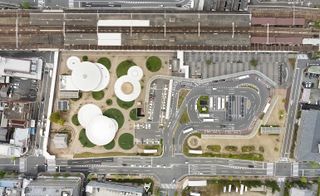
An aerial view of Tenri Station plaza.

A cafe located within one of Nendo’s white concrete circular pavilions.
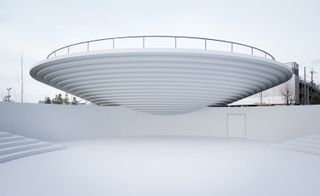
A meeting place is surrounded by a stepped seating area.
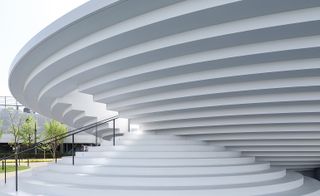
Entry to the cofun-like structures are playful and conceptual.

Stepped levels of the concrete cofun have multi-functional purposes as steps, benches and places for children, and adults, to play.
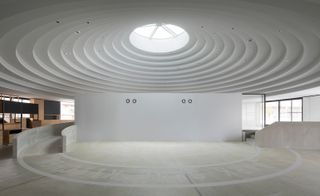
Inside one of Nendo’s contemporary cofun structures.
INFORMATION
For more information, visit the Nendo website
Wallpaper* Newsletter
Receive our daily digest of inspiration, escapism and design stories from around the world direct to your inbox
Harriet Thorpe is a writer, journalist and editor covering architecture, design and culture, with particular interest in sustainability, 20th-century architecture and community. After studying History of Art at the School of Oriental and African Studies (SOAS) and Journalism at City University in London, she developed her interest in architecture working at Wallpaper* magazine and today contributes to Wallpaper*, The World of Interiors and Icon magazine, amongst other titles. She is author of The Sustainable City (2022, Hoxton Mini Press), a book about sustainable architecture in London, and the Modern Cambridge Map (2023, Blue Crow Media), a map of 20th-century architecture in Cambridge, the city where she grew up.
-
 Coming soon: a curated collection of all the new EVs and hybrids that matter
Coming soon: a curated collection of all the new EVs and hybrids that matterWe've rounded up new and updated offerings from Audi, Porsche, Ineos, Mini and more to keep tabs on the shifting sands of the mainstream car market
By Jonathan Bell Published
-
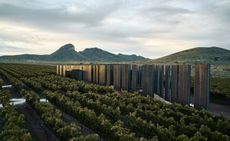 Southern Arizona sets the scene for a corking vineyard experience at Los Milics
Southern Arizona sets the scene for a corking vineyard experience at Los MilicsLos Milics winery, designed by Chen + Suchart Studio, is set among vines at the foothills of the Mustang Mountains
By Sofia de la Cruz Published
-
 Spanish design studio Masquespacio's new HQ is a historical mansion bursting with colour
Spanish design studio Masquespacio's new HQ is a historical mansion bursting with colourDesign studio Masquespacio presents its new home and office, a bold and unique space in a beautifully refurbished historic villa near Valencia
By Léa Teuscher Published
-
 Architectural gardens around the world to soothe the soul
Architectural gardens around the world to soothe the soulFrom small domestic gardens, to nature reserves, urban interventions and local parks, here are some of the finest green projects that place nature at their heart
By Ellie Stathaki Published
-
 2023 Obel Award celebrates Kate Orff’s ecosystem-driven designs
2023 Obel Award celebrates Kate Orff’s ecosystem-driven designsScape and its founder Kate Orff have scooped the 2023 Obel Award, which celebrates the landscape studio’s Living Breakwaters project
By Ellie Stathaki Published
-
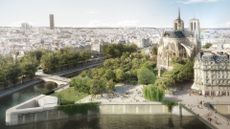 Bas Smets on landscaping Notre-Dame, and ‘hacking' a city to fight climate change
Bas Smets on landscaping Notre-Dame, and ‘hacking' a city to fight climate changeLandscape architect Bas Smets talks to us about Notre-Dame, modern gardens, microclimates and more
By Ellie Stathaki Last updated
-
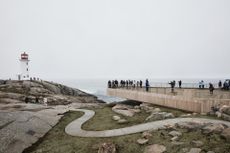 Omar Gandhi Architect’s new viewing deck celebrates Canada’s Maritime provinces
Omar Gandhi Architect’s new viewing deck celebrates Canada’s Maritime provincesArchitect Omar Gandhi led the design for Peggy’s Cove Infrastructure Improvement Strategy, including a new, accessible observation deck positioned on a unique vantage point of the glaciated landscape on the iconic Peggy’s Cove in Nova Scotia
By Nasra Abdullahi Last updated
-
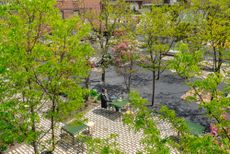 Landscape architect Julie Bargmann scoops 2021 Oberlander Prize
Landscape architect Julie Bargmann scoops 2021 Oberlander PrizeThe 2021 Oberlander Prize has been announced, honouring landscape architecture and Cornelia Hahn Oberlander – and the winner is American landscape architect Julie Bargmann
By Ellie Stathaki Last updated
-
 Erik Dhont goes wild in ‘unstructured’ Geneva garden
Erik Dhont goes wild in ‘unstructured’ Geneva gardenThis Geneva garden is a spirited balance of art, architecture and nature, courtesy of Belgian landscape architect Erik Dhont for Karin Handlbauer, founder of Galerie Mezzanin
By Ellie Stathaki Last updated
-
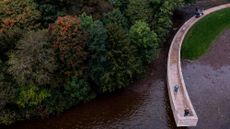 ‘The Gathering Place’ is a minimalist gesture on the Scottish landscape
‘The Gathering Place’ is a minimalist gesture on the Scottish landscapeThe Gathering Place by artists Sans Façon, architects KHBT, and the City of Inverness brings together architecture, art and the Scottish landscape
By Ellie Stathaki Last updated
-
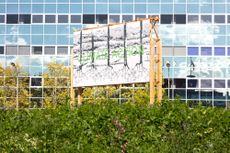 The Modernist Glade: an urban garden pops up in Milton Keynes
The Modernist Glade: an urban garden pops up in Milton KeynesThe Modernist Glade, a temporary, architectural public commission by London studio Hayatsu Architects and Danish artist Tue Greenfort, opens to the public
By Giovanna Dunmall Last updated